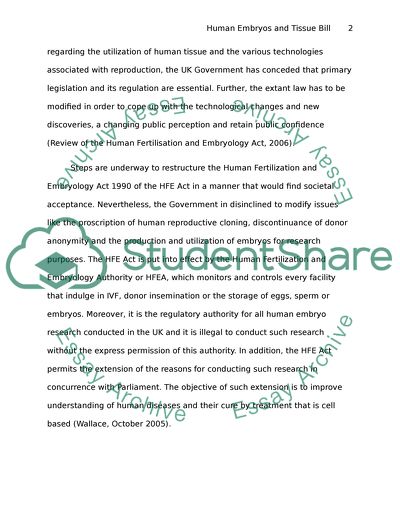Cite this document
(A Critique of Part 4 of the Human Tissue and Embryos Bill Essay Example | Topics and Well Written Essays - 1500 words, n.d.)
A Critique of Part 4 of the Human Tissue and Embryos Bill Essay Example | Topics and Well Written Essays - 1500 words. https://studentshare.org/law/1541843-to-produce-a-critique-pf-part-4-of-the-draft-human-tissue-and-embryos-bill
A Critique of Part 4 of the Human Tissue and Embryos Bill Essay Example | Topics and Well Written Essays - 1500 words. https://studentshare.org/law/1541843-to-produce-a-critique-pf-part-4-of-the-draft-human-tissue-and-embryos-bill
(A Critique of Part 4 of the Human Tissue and Embryos Bill Essay Example | Topics and Well Written Essays - 1500 Words)
A Critique of Part 4 of the Human Tissue and Embryos Bill Essay Example | Topics and Well Written Essays - 1500 Words. https://studentshare.org/law/1541843-to-produce-a-critique-pf-part-4-of-the-draft-human-tissue-and-embryos-bill.
A Critique of Part 4 of the Human Tissue and Embryos Bill Essay Example | Topics and Well Written Essays - 1500 Words. https://studentshare.org/law/1541843-to-produce-a-critique-pf-part-4-of-the-draft-human-tissue-and-embryos-bill.
“A Critique of Part 4 of the Human Tissue and Embryos Bill Essay Example | Topics and Well Written Essays - 1500 Words”. https://studentshare.org/law/1541843-to-produce-a-critique-pf-part-4-of-the-draft-human-tissue-and-embryos-bill.


